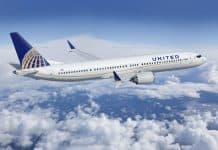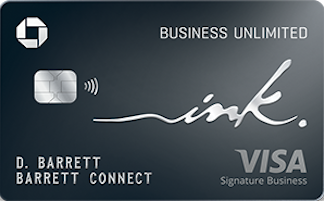
Back in May 2024, you may recall that the CFPB and the DOT jointly questioned some industry executives about frequent flyer programs and the way they are both seemingly non-transparent on what things will cost at any given time (true!) and program devaluations (i.e. it’s not fair that you might spend on an airline co-brand card to earn a free trip only to see that free trip quadruple in price overnight).
Well, Transportation Secretary Pete Buttigieg is back, but with some more teeth this time.
The CEOs of four major US programs – American Airlines, Delta Air Lines, Southwest Airlines, and United Airlines – all got the following letter today:
Dear [Airline CEO]:
Airline rewards programs have become a meaningful part of the U.S. economy and a major part of the airline business model, by some measures developing a financial significance that rivals or even outweighs the operation of flights. These programs can shape how customers interact with airlines, and many Americans reportedly have point balances substantial enough that they amount to part of their savings.
Given the economic importance of rewards in the aviation sector, the Department of Transportation (DOT or Department) has initiated a review to examine the fairness, transparency, predictability, and competitiveness of airlines’ rewards programs. DOT has authority under 49 U.S.C. § 41712 to investigate and take action against airlines and ticket agents for unfair or deceptive practices and unfair methods of competition in air transportation or the sale of air transportation.
The rewards programs of the largest four U.S. carriers – American Airlines, Delta Air Lines, Southwest Airlines, and United Airlines – play an outsized role in shaping the policies, practices, and participation in the airline rewards market due to their size, scale, scope, and membership.
Accordingly, as part of our review, the Department is seeking more specific data to better understand the largest rewards programs and identify potential competition or consumer protection issues or risks, and I have enclosed an order to file a report responsive to our questions. Our goal with this inquiry is to ensure that customer rewards are protected from any practices that would diminish their value, benefit, or availability.
They are asking, over a lookback period of SIX years, to learn pretty much everything that might show practices that are unfair to consumers.
They want to know (this is a short sample from a very long list:
- Everything about their elite status programs, including how much money must be spent to attain status
- All fees that the program charges
- A description of each policy, term, condition, requirement, restriction, limitation, and/or expiration that impacts the availability, access, use, value, features, points to obtain, fees, and/or monetary cost of any membership level, status, benefit, or reward, or impacts the timing, options, processes, and/or channels through which they can be obtained, accessed, used, maintained, or redeemed
And then they want to know about changes. This speaks entirely to devaluations of programs and yes, there is a specific line item that asks if customers were given notice before the change. They are even asking for a “reason for the change.”
Related to that they ask for:
…any options that were provided to existing rewards customers to avoid the
change, preserve their membership level, status, benefits, rewards, and/or
rewards points, grandfather in their existing terms, or otherwise prevent any
loss,
i. if no options were provided, explain why,
ii. for each option provided, describe the option, what was
preserved and lost, how customers were reimbursed for the loss,
and provide the total and per-account average dollar value of the
rewards points preserved and lost through that option,
I love this one. They are specifically trying to find out, when an airline devalued a program, what their net gain and the customer’s net loss was.
And then there is this beauty that (in my opinion) speaks to a clear understanding that dynamic pricing simply doesn’t benefit the consumer.
Please identify what, if any, rewards points have a dynamic dollar value that changes based on variable factors. For each type of rewards point with a dynamic dollar value, please describe when and why the value became dynamic; how often the value changes;
how the value is determined, including what variables are used; why each of those variables are used; what, if any, changes have been made to those variables since the value became dynamic for that rewards point; the financial impact on an average rewards customer for each variable change; the average dollar value of each type of reward point prior to becoming dynamic; and how much the average dollar value has changed for each type of reward point per quarter since becoming dynamic.
And they really dig on on these devaluations further:
6. For each of the following questions, please provide narrative responses, including a description of how each specific dollar value was calculated, and provide any documents or records necessary to substantiate your response:
a. What is the average dollar value of one reward point if redeemed for money per year since July 31, 2018? What is the dollar cost for a consumer to purchase one reward point on average per year since July 31, 2018? To the extent these amounts differ, please explain how and why, and provide accounting records to support any cost rationale.
b. What is the average dollar value of one reward point if redeemed for a one-way domestic ticket, a round-trip domestic ticket, a one-way international ticket, or a round-trip international ticket per year since July 31, 2018? How many rewards points are required to purchase each of the following: a one-way domestic ticket, a round-trip domestic ticket, a one-way international ticket, or a round-trip international ticket on average per year since July 31, 2018? What, if any, is the average price differential between purchasing a ticket with money versus rewards points per year since July 31, 2018? To the extent these amounts differ, please explain how and why, and provide accounting records to support any price differential.
c. What is the average dollar value of one reward point if redeemed to procure each ancillary service provided by [AIRLINE] per year since July 31, 2018? How many rewards points were redeemed for each service per year since July 31, 2018? For each ancillary service, please include the ancillary service fee amount and the amount of points required to purchase. To the extent these amounts differ, please explain how and why, and provide accounting records to support any price differential.
You can read the entire letter along with what airlines are expected to submit here. There’s so much I didn’t paste above simply because of how long it is. I picked out what I think you all will find the juiciest.
I honestly can’t think of anything that they didn’t ask here.
They ask about partnerships. They ask about top customer complaints. They ask not just about award availability but average cost of the same award types year by year (which I would assume will show increasing availability along with an overall increasing cost in miles).
Responses are due to the DOT by December 4, 2024 at 5:00 PM Eastern time.
I truly would not want to be an airline executive tasked with collating this information in just 3 months. This is seriously a LOT of information to pull and put in a report. But I also wouldn’t want to be an airline that missed the deadline….
Finally, I find it somewhat interesting that they picked these four airlines and only these four airlines. I get AA, Delta and UA – but if you are going to include Southwest, which prices wholly dynamically and always has, then why exclude JetBlue which does the same? And why is Alaska excluded (although they would, in my opinion, shine the brightest light by a landslide)?
In any event, I’m a huge fan of this inquiry as I absolutely think there needs to be a ton more transparency in frequent flyer programs.
I’m not going to even try and look up all the times I’ve written about devaluations, especially no-notice devaluations, over the many years of this blog because I know there are dozens and dozens of them. I remember United devaluing their program right in the middle of the COVID pandemic!
There really does need to be a set of government guidelines that set rules limiting the extent of both devaluations and dynamic pricing secrecy. When the credit cards are thought of by so many cardholders as earning a form of “currency,” they have a reasonable expectation to have an idea what those points will be worth in the future.
I’ll be curious to hear what you think.
Thoughts?
Let me know below in the comments, on Twitter, or in the private MilesTalk Facebook group. And don't forget to follow me on Instagram for all sorts of tips on miles, points, credit cards, and travel.
If this post helped you, please consider sharing it!
You can find credit cards that best match your spending habits and bonus categories at Your Best Credit Cards.
New to all of this? My “introduction to miles and points” book, MilesTalk: Live Your Wildest Travel Dreams Using Miles and Points is available on Amazon and at major booksellers.
















![Amazon “Pay One Point” Deal Links (Compilation) [UPDATED] amazon pay one point pay 1 point links amex chase citi discover](https://milestalk.com/wp-content/uploads/2023/11/payonepoint-218x150.png)



